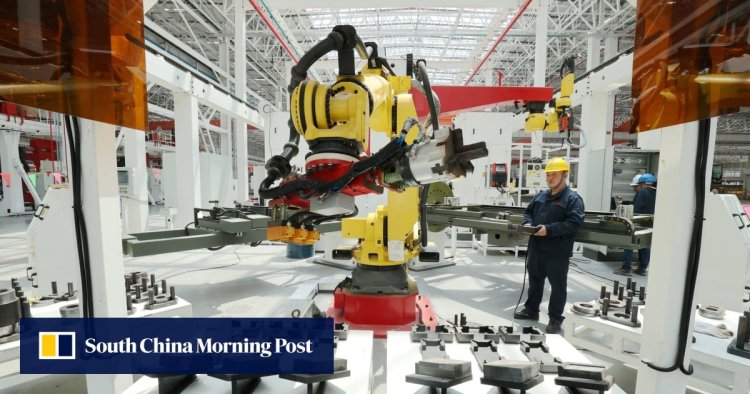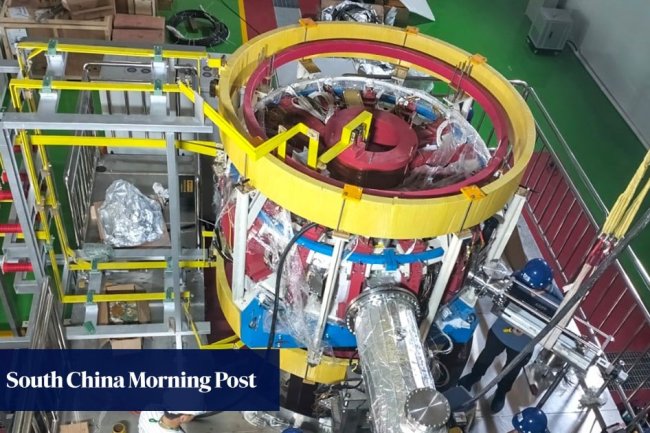China manufacturing PMI hits lowest level since post-Covid reopening, official data shows
2023.04.30 12:10China’s manufacturing activity unexpectedly contracted in April while expansion of services slowed, in the latest evidence of the challenges facing Beijing amid an uneven post-Covid economic recovery.The official manufacturing purchasing managers’ index (PMI) fell below the 50-point mark separating monthly expansion and contraction to 49.2 in April from 51.9 in March, hitting the lowest level since China’s post-pandemic reopening late last year, according to the National Bureau of Statistics on Sunday.It underperformed the market estimate of 51.5, which came after China posted a surprise economic growth of 4.5 per cent in the first quarter.A sub-index to measure new orders dipped to 48.8 from 53.6, indicating decline in market demand and acting as a major contributor to the fall in the headline indicator.Another index to gauge new export orders also fell to contraction range – to 47.6 from last month’s 50.4 – its lowest level in three months.Weak demand, slowing product


China’s manufacturing activity unexpectedly contracted in April while expansion of services slowed, in the latest evidence of the challenges facing Beijing amid an uneven post-Covid economic recovery.
The official manufacturing purchasing managers’ index (PMI) fell below the 50-point mark separating monthly expansion and contraction to 49.2 in April from 51.9 in March, hitting the lowest level since China’s post-pandemic reopening late last year, according to the National Bureau of Statistics on Sunday.
It underperformed the market estimate of 51.5, which came after China posted a surprise economic growth of 4.5 per cent in the first quarter.
A sub-index to measure new orders dipped to 48.8 from 53.6, indicating decline in market demand and acting as a major contributor to the fall in the headline indicator.
Another index to gauge new export orders also fell to contraction range – to 47.6 from last month’s 50.4 – its lowest level in three months.
Weak demand, slowing production drags down China’s factory activity growth
The fall in April was mainly due to “insufficient market demand and the high base effect of a rapid recovery in manufacturing in the first quarter”, according to Zhao Qinghe, a senior economist with the statistical bureau.
Production in the chemical fibre, ferrous metal mining and processing sectors have slowed due to weak market demand, while special equipment and electrical and mechanical equipment sectors have continued to expand, the bureau said in a separate statement.
Turbulence in commodities prices dragged down manufacturers’ purchase of raw materials, it said.
Expectations were lower but still remained in the expansion range at 54.7, compared to 55.5 in the previous month. This indicated “the stable confidence of enterprises in the growth of the market”, Zhao said.
The PMI for the services sector, despite falling slightly to 56.4 in April from 58.2 in March, remained the second highest reading for the year so far.
In its first official economic assessment since a new leadership took over, Beijing said economic growth was better than expected and operations had got off to a good start, but also noted there are risks threatening the sustainability of the recovery.
“The current economic improvement is mainly owing to recovery-driven growth, but the internal driving force is not strong, and demand is still insufficient,” said a statement on Friday wrapping up a meeting of the Politburo, the ruling Communist Party’s top decision-making body.
China began a five-day May Day “golden week” holiday from Saturday, with travel figures expected to recover to pre-Covid levels, despite the risk of rising infections. The period is also being closely watched as a litmus test for consumer spending amid the overall economic recovery efforts.
Zhang Zhiwei, chief economist with Pinpoint Asset Management in Shanghai, said the data indicated recovery in domestic demand was not broad-based.
“Mobility indicators suggest the current long holiday is likely to have hit a record in terms of number of travellers. Yet property market activities still seem muted, and unemployment remains high,” Zhang said.
“These mixed signals are likely to keep the pressure on the government to continue its supportive fiscal and monetary policies in the second quarter.”
The Ministry of Commerce said retail sales on Saturday rose 21.4 per cent from the previous year. The China Tourism Academy forecast the total number of journeys between Saturday and Wednesday to grow 4 per cent from the 2019 level, while China State Railway Group estimated that traffic from April 27 and May 4 would rise 20 per cent from the same period.
What's Your Reaction?













